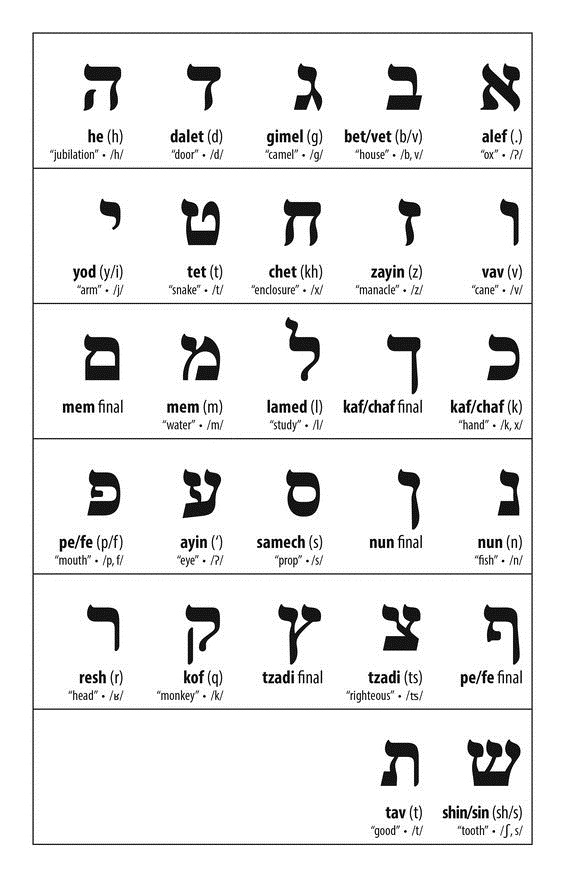Learning a new language can be an exciting journey, and Hebrew is no exception! Known for its rich history, beautiful script, and deep cultural roots, Hebrew is not only the language of ancient scriptures but also a vibrant, modern language spoken today in Israel and Jewish communities worldwide. Whether you want to explore religious texts, travel, or simply challenge yourself with a new skill, this guide will help you master the basics of Hebrew.
1. The Hebrew Alphabet (Aleph-Bet)
The Hebrew alphabet, known as the “Aleph-Bet,” consists of 22 letters. Unlike the English alphabet, it’s written and read from right to left. Here’s a quick look at some essential letters to get you started:
- א (Aleph) – A silent letter but acts as a placeholder for vowels.
- ב (Bet) – Sounds like “b” in “boy.”
- מ (Mem) – Sounds like “m” in “moon.”
- ש (Shin) – Sounds like “sh” in “sheep.”
Practice writing each letter from right to left, and soon you’ll find yourself becoming more comfortable with the script.
2. Hebrew Vowels
Unlike English, the Hebrew alphabet doesn’t have separate letters for vowels. Instead, vowels are indicated with small dots and dashes placed above, below, or inside the letters. These vowel marks are called “Nikkud.” As you progress, you’ll find that many Hebrew speakers omit vowel markings in everyday writing, but for beginners, they’re helpful in understanding pronunciation.
For example:
- אָ (Kamatz) sounds like “a” in “father.”
- אִ (Chirik) sounds like “ee” in “see.”
Take time to practice combining the consonants and vowels. This will make it much easier to read Hebrew words accurately.

3. Basic Hebrew Greetings and Phrases
Getting familiar with common greetings is a great way to start speaking Hebrew:
- שלום (Shalom) – Hello/Peace
- מה שלומך? (Ma shlomcha?) – How are you? (for males)
- מה שלומך? (Ma shlomech?) – How are you? (for females)
- תודה (Todah) – Thank you
- בבקשה (Bevakasha) – You’re welcome/Please
Try using these phrases daily, and you’ll quickly build your confidence!
4. Counting in Hebrew
Numbers are another fundamental part of any language. Here’s how you count from 1 to 5 in Hebrew:
- אחד (Echad)
- שתיים (Shtayim)
- שלוש (Shalosh)
- ארבע (Arba)
- חמש (Chamesh)
Practice these numbers until you feel comfortable, then challenge yourself by moving up to higher numbers.
5. Pronunciation Tips
Hebrew pronunciation can be tricky, especially if you’re not used to certain sounds. Here are a few tips:
- The ח (Chet) sound doesn’t exist in English. It’s a guttural “h” sound, like the Scottish “loch.”
- The ר (Resh) is often rolled, similar to the Spanish “r.”
Don’t worry if it feels awkward at first – with time and practice, it will become second nature!
6. Practice Reading and Writing
One of the best ways to master Hebrew is by practicing regularly. Start with simple words like:
- אמא (Ima) – Mom
- מים (Mayim) – Water
- ספר (Sefer) – Book
Write these words repeatedly and try forming sentences as you progress. Reading children’s books, flashcards, or even labeling items around your home can be incredibly helpful for memorization.
7. Resources for Learning Hebrew
To truly master Hebrew, consider using various resources:
- Apps like Duolingo or Memrise offer interactive lessons.
- YouTube Channels such as HebrewPod101 provide video lessons.
- Textbooks like “Hebrew From Scratch” are great for structured learning.
Find the resources that work best for you and immerse yourself in the language as much as possible.
Final Thoughts
Learning Hebrew may seem challenging at first, but with patience and consistent practice, you’ll find yourself making progress in no time. Whether you’re exploring ancient texts or preparing for a trip to Israel, mastering the basics will open a new world of understanding and communication.
So, take a deep breath, or as we say in Hebrew, נשום עמוק (Nishom Amok) – and start your journey into this beautiful and ancient language!
בהצלחה (B’hatzlacha)! – Good luck!
2 thoughts on “Mastering Basic Hebrew: A Beginner’s Guide to the Language”
Comments are closed.